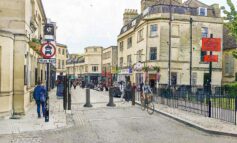The Bath Preservation Trust has warned that despite public commitments to address the climate emergency and reduce carbon emissions, the Bath Green Belt is at risk of being slowly eroded.

The Bath Green Belt | Photo courtesy of the Bath Preservation Trust
At the recent Local Plan Partial Update examination, Bath & North East Somerset Council attempted to push forward the removal of land from the Green Belt, citing “exceptional circumstances”. The University of Bath has also expressed a similar intent.
These “exceptional circumstances” are to enable both organisations to build new buildings or install infrastructure.
The Bath Preservation Trust (BPT) has urged the local authority and the University to think again, as developing on the Green Belt goes against the ‘green’ agenda and their commitments.
BPT has said it is concerned that the reason for the attempts to remove land from the Green Belt is due to it being cheaper to do so than obtain planning permission.
It is possible to obtain planning permission within a Green Belt, but conditions require development sizes to be limited and mitigated to protect views, with more landscaping provided.
If land is removed from the Green Belt, it opens the potential for any development to be bigger and more imposing.
In the long-term, it can put a significant premium on the land as a site for future housing development within a green setting, but with less rigorous planning restrictions.
Land recently requested for removal may only be a small proportion of the Green Belt, but if allowed it would set a precedent, which BPT believes would embolden the further release of undeveloped sites under “exceptional circumstances”.
The recent Local Plan Partial Update saw requests received from B&NES Council. In 2023-2024 a new Local Plan will be created, in which it is expected more submissions for the removal of Green Belt land will feature.
Green Belts were established more than 50 years ago to limit urban sprawl and demarcate conurbations from rural areas.
CEO of Bath Preservation Trust, Alex Sherman, said” “The Green Belt of Bath is intrinsic to the city as a World Heritage Site, which lists the green setting as part of its Outstanding Universal Value.
“It should be untouchable for large development and protected for future generations.
“Adult trees within the Green Belt absorb huge volumes of atmospheric carbon, so are essential in the fight against climate change, with each adult tree absorbing up to 25 kilos of carbon.
“We believe more trees are needed and the Green Belt should be extended, not eroded.
“As well as the environmental benefits, our green spaces are important for physical and mental wellbeing and wildlife and must be protected.”



